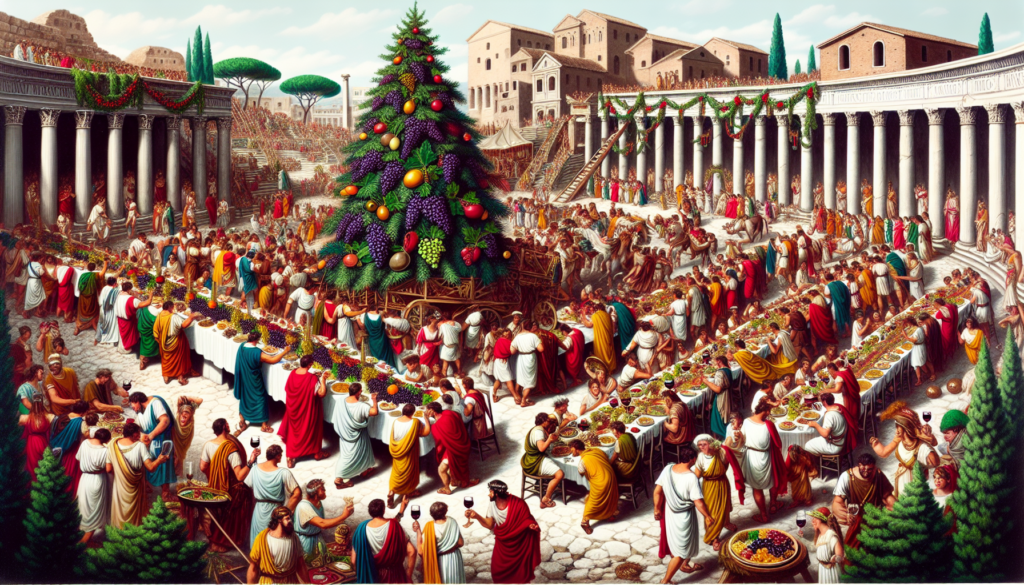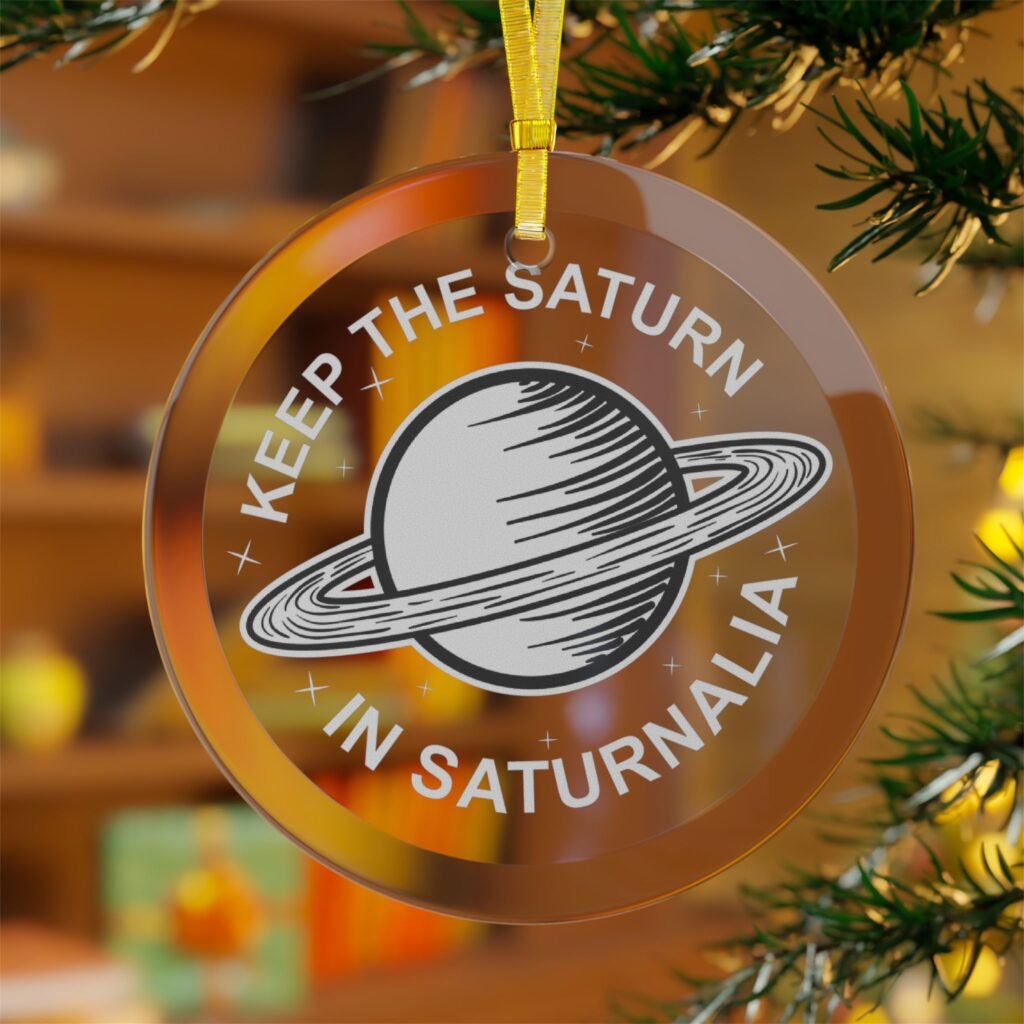Heresy | her· e· sy | ˈher-ə-sē
belief or opinion contrary to orthodox religious (especially Christian) doctrine.
Heresy sounds like a scary word—especially if you're like me, having grown up in a conservative, religious, monotheistic household. Words like blasphemy, sin, heresy, and witchcraft were major no-nos. And here we are at our first heresy of this article...asking the question why? WHY are blasphemy, sin, heresy, and witchcraft such taboo topics? Where did their evil rep come from?

The Satanic Panic, a cultural phenomenon that gripped the United States during the 1980s and early 1990s, serves as a profound reminder of how fear and misunderstanding can spiral into widespread hysteria. Originating from a blend of societal anxieties, media influence, government-driven mind control operatives, and religious fervor, this panic was fueled by allegations of widespread satanic ritual abuse, many of which were later discredited or proven false. The roots of this phenomenon can be traced back to the deep-seated fear of evil ingrained in monotheistic traditions.
Monotheism, with its belief in a singular omnipotent deity, often emphasizes a dualistic view of the world: good versus evil. This dichotomy is deeply embedded in the narratives of major monotheistic religions, where evil is frequently personified by figures like Satan. This conceptualization of evil has historically been used to explain suffering and misfortune, creating a framework that can sometimes lead to scapegoating and moral panic.
During the Satanic Panic, this binary perception of good and evil was manipulated and amplified by sensationalist media reports and pseudo-scientific claims. The fear that satanic cults were operating under the radar, corrupting the innocence of children and undermining societal values, resonated deeply with those who viewed the world through this lens. As stories of ritual abuse captured headlines, they tapped into a primal fear of malevolent forces lurking within society.
However, it is essential to recognize that this fear-driven response was not rooted in reality but rather in misunderstandings and exaggerations. The concept of "evil" as an external force can often obscure more nuanced perspectives on human behavior and societal issues. By attributing negative actions solely to an abstract embodiment of evil, we risk oversimplifying complex problems that require thoughtful analysis and compassionate solutions.
Throughout history, monotheistic religions have been powerful forces shaping societies and cultures. From their inception, these religions have wielded significant influence over followers. One of the most potent tools they have used to maintain this influence is the deliberate use of fear tactics, particularly through branding individuals as "heretics."
The concept of heresy is rooted in the idea that deviation from established doctrine is not only wrong but dangerous. This label has been used to instill fear among believers, discouraging dissent and encouraging conformity. In many cases, being branded a heretic has led to severe punishments or ostracism. This fear of social or even physical repercussions keeps many adherents in line, perpetuating the control that religious authorities hold over individuals.
However, it's essential to recognize that questioning and critical thinking are not inherently negative. They are vital components of personal growth and societal progress. Labeling dissenters as heretics stifles innovation and understanding, keeping communities stuck in dogma rather than evolving.
So, with that being said, I present to you my latest book, The Book of Heresy. One that opposes monotheistic religion—which is not evil to oppose. At all.
The book highlights the realms of the spiritual, emotional, and physical, and features prose from the perspective of the rulers of each plane of existence.

This poetry book brings to life heretical thoughts that defy monotheistic doctrine in alignment with ancient esoteric wisdom.
For millennia, the warnings of heretics and their heresies have echoed in the halls of church buildings and dogmatic writings. Beware the heretic! Birthed out of philosophy, heretics ask, “Where is the wisdom?” and, “Where is the love?”
The silence is an answer.
The rage-filled accusation of evildoing is an answer.
The curiosity with no follow-through is an answer.
But so is listening to truly hear the questions at hand and respond with, “Wait. Where is the wisdom? Where is the love? And if it’s not here, then why am I?”
People can cling to whatever they choose—but without wisdom, what’s the point of divine connection? And without love, what’s the point of life? Such thought is deemed heretical to those who have built their empires on heartless campaigns to suppress Lady Wisdom and all her glory.
Join me on a journey of heresy—and other things that aren’t actually evil.
The Saturnalia festival was an ancient Roman celebration held in honor of Saturn. Saturn's roots can be traced back to Ba'el, an older deity from the Canaanite pantheon. The syncretism observed in ancient religions often led to deities from one culture being absorbed into another under different names but with similar attributes. Thus, Saturn inherited aspects of Ba'el's character.

Ba’el, though often recognized for his association with fertility, weather, rain, and agriculture, is also a death deity. He is the masculine companion of the Canaanite Goddess Astarte. Though conflated with evil through the lens of monotheistic religions, who aimed to “demonize” anything that did not fit their agenda for control over the people, neither Ba’el nor Astarte are wicked. They are the original primordial deities that pre-date religions, such as Christianity, Islam, and Judaism. In fact, many stories and attributes of Yahweh and Jesus in Christianity and the Christian bible, were stolen from older traditions, themes, rituals, and wisdom connected to Ba’el.
The winter months that we are entering now are a part of the “death” portion of the year, making celebrations of Yule, the Winter Solstice, Saturnalia, and Christmas all closely linked with one another through themes of death and life.
Since Ba’el is a death deity and we are celebrating Ba’el and his Roman counterpart Saturn, it’s necessary to discuss the Ba’el Cycle. Many people think of death solely in conjunction with people, animals, or plants withering or ceasing to exist—but it’s more than that. Death is a part of a cycle and is woven all throughout the fabric of existence. This is reflected in what is called the “Ba’el Cycle” (or Baal Cycle). This was the journey that Ba’el took to defeat Death (with a capital D because it was a personified entity in the Canaanite pantheon), bring order to the chaos of the universe, and ultimately be rebirthed to continue the cycle. All of this was done in conjunction with his feminine companion who took on the names of Astarte, Anat, and Athirat.
Fertility — Fertility and birth are only possible because someone or something ceased to exist in that state prior to being birthed. This could apply to people, plants, animals, ideas, and anything else that can be creatively given life.
Weather — Weather brings rain and sun needed for living beings to thrive but it equally brings destruction, chaos, and death. Agricultural cycles are also heavily reflected on in many pagan celebrations because crops, harvest, and the like are directly linked with the changing of the seasons.
Time — In Roman mythology, Saturn is the god of time and harvest. His Greek counterpart is Cronus, associated with the passage of time and cycles of life. For Ba’el, he is capable of seeing and understanding all of time and sharing these insights with his devotees. Time is yet another death and chaos-related theme because all living things on the material plane are bound by a “ticking clock” but also, time is a construct and other planes of existence operate outside of it entirely.
Discipline, Order, and Structure — Astrologically, Saturn is linked to discipline, structure, responsibility, and boundaries—an influence that shapes personal growth through challenges. Ba’el is also known for having high standards and expectations for his devotees, often urging people to not jump into his path of esoteric wisdom and occultism if they aren’t prepared for a full reset (death and rebirth, anybody?) in their lives.

One of my favorite ancient Canaanite wisdom principles directly relates to the cycle of small things becoming great and vice versa. One of the ways this concept was celebrated during the festival was with social inversion of roles. For example, people in government or leadership were required to dress normal to blend in with society, children were appeased by their parents and given gifts, slaves would act as the head of the household, and so on.
Another aspect that I particularly love is that the celebration grew to be a seven-day festival, traditionally observed from December 17th to 23rd, and this is another subtle nod to the great Ba’el and Astarte of old as seven is a number sacred to them. This is reflected in the seven sacred Canaanite mysteries set in motion to bring order to the chaos of existence. This is also a fundamental aspect of what will be taught in The Mystic’s Journey program that I’m launching in January 2025.
Here are some of the highlights for how the festival was celebrated in ancient times:

Long before there was a Christmas for people to insist on keeping the “christ” in it, there was the Saturn in Saturnalia. Here are some of the modern Christmas practices that were rooted in Saturnalia traditions of old.
Saturnalia Lights — During Saturnalia, people would adorn their homes with greenery and light candles to ward off the darkness of winter and to symbolize hope for the return of light and warmth. The use of light was integral to these celebrations, serving both practical and symbolic purposes. The tradition of illuminating homes during this time of year eventually blended with Christmas celebrations as Christianity spread throughout the Roman Empire.
Saturnalia Carols — Music and song played a crucial role in Saturnalia celebrations. Revelers would sing festive tunes as part of the joyous celebrations. These songs were not specifically about Christmas or Christian themes but rather focused on themes related to nature, the changing seasons, and the general spirit of festivity that characterized Saturnalia. As Christianity spread throughout the Roman Empire, early Christians sought to replace pagan festivals with Christian ones. Over time, elements of Saturnalia were absorbed into Christmas celebrations. The practice of singing during festive times persisted, evolving into what we now recognize as Christmas carols.
Saturnalia Gifts — During Saturnalia, people exchanged small, symbolic gifts like candles, fruit, or small figurines called sigillaria. These presents were meant to bring good luck or symbolize light during the darkest time of the year. The act of gift-giving was intended to strengthen social bonds and spread goodwill.
Saturnalia Attire — During the festival, people donned brightly colored garments and exchanged gifts to signify prosperity and joy. These garments were often adorned with symbols and patterns intended to bring good fortune for the coming year. The vibrant attire worn during this festival laid the groundwork for what would eventually evolve into today's “ugly Christmas sweaters.”
Saturnalia Candles — One of the central elements of Saturnalia was the use of candles. These candles symbolized the quest for knowledge and truth during the dark days of winter.
Saturnalia Wreaths — During Saturnalia, Romans would decorate their homes with greenery as part of their celebrations. Wreaths made from holly, ivy, and other evergreen plants symbolized life and resilience through winter's harshness. These decorations not only brightened homes during the dark winter months but also served as offerings to Saturn. The round shape was also a symbol of the Ba’el cycle and a reminder of the death and rebirth circle of life.
Saturnalia Trees — During this time, Romans would decorate their homes with evergreen boughs as symbols of life and renewal during the bleak winter months. These evergreen decorations served as a reminder of the coming spring and were believed to ward off evil spirits.
Saturnalia Colors — Gold and silver played a significant role in this festival, symbolizing wealth, prosperity, and the sun's return as the days began to lengthen post-winter solstice. These metals were used in decorations and gifts, embodying the hope for abundance and light. Green was central to Saturnalia as well, represented by evergreen plants like holly and ivy. These plants symbolized eternal life and resilience through the harsh winter months, serving as a reminder of nature's enduring spirit. Red, meanwhile, was linked to the vitality and warmth of life. It was often used in conjunction with green to represent the life force amid the colder season.
Saturnalia Ornaments — During Saturnalia, trees and plants were adorned with round objects that acted as sun-like symbols. These round shapes were meant to represent the sun and its anticipated return, bringing light and warmth back to the world.

Traditional Feast — Host a feast with friends and family, featuring traditional dishes like roasted meats, vegetables, and sweet treats. Decorate your table with greenery and candles to symbolize the return of the sun. Include foods symbolic of the sun, warmth, abundance, and vitality, such as pomegranates, figs, honey cakes, roasted nuts, and mulled wines.
Gift-Giving — Embrace the spirit of generosity by exchanging small gifts with loved ones. Consider homemade or thoughtful presents that reflect the values of sharing and goodwill associated with Saturnalia. Even the gift of a red or green taper candle, as simple as that may sound, would be perfect!
Role Reversal — In the spirit of ancient Saturnalia, try role-reversal games where participants switch roles for a day. This could mean children taking on adult responsibilities (such as setting the table or something age appropriate) or bosses serving their employees in a fun and light-hearted manner. This could also be fun to experiment with between partners (wink wink).
Candle Lighting Ceremony — Honor the return of the sun by holding a candle lighting ceremony. Invite participants to share wishes or intentions for the coming year as they light their candles. This could also be expanded into a ritual where old habits or thing from the past year that you want to leave behind could be written on bay leaves or paper and burned to make room for new energy.
Decorate with Evergreen — Adorn your home with evergreen branches, cedar, holly, and ivy to symbolize eternal life and renewal, echoing ancient practices. If you have pets, be sure to research which plants and herbs are safe for your home.
Crafting Sun Symbols — Create sun symbols to decorate your home or as part of a ceremonial altar celebrating the sun’s return. Dehydrated orange slices are a super easy option, but you can also design suncatchers using wire and beads in sunny hues like amber and gold. Shape the wire into circular sun patterns and thread beads along it to create a dazzling effect when hung in windows.
Storytelling — Gather around and share myths and stories related to Saturnalia or other sun-related legends from various cultures to honor ancient traditions.
Community Service — Reflecting Saturnalia’s themes of charity and goodwill, participate in community service activities or donate to local charities as a way to give back during this festive time.
Outdoor Celebration — If weather permits, spend time outdoors appreciating the daylight. Organize a nature walk or picnic to connect with nature and celebrate longer days ahead.
Music and Dance — Play festive music and enjoy dancing together, embracing joy and merriment as was customary during ancient Saturnalian festivities.
Supplies:
Start by grounding, cleansing, and protecting yourself. Begin at dawn to symbolize the rising sun. Set up the altar by laying the yellow or gold cloth on a flat surface. Place the sun symbol at the center.
Arrange and light the candles around the altar, focusing on creating a welcoming and warm environment.
Stand facing east, where the sun rises. Close your eyes, take deep breaths, and visualize the warmth of the sun enveloping you.
Recite an invocation such as:
"Sun God, giver of life and light,
We honor your radiant energy,
We welcome your warmth and wisdom."
Place fruits or grains on the altar as offerings, symbolizing gratitude for sustenance. Add fresh flowers to enhance beauty and vibrancy.
Hold the bowl of water up to the sun, allowing its rays to touch it. Say a blessing for life-giving water, then gently pour a few drops onto the earth as a gesture of returning life back to nature.
Sit comfortably near your altar and spend a few minutes in silent meditation, focusing on personal intentions or simply basking in gratitude for the sun's energy.
Extinguish each candle with reverence, thanking the Sun God for its presence in your life. To conclude, you may choose to sing, dance, or engage in any joyful activity that honors the vitality of the sun. Then, re-protect, re-cleanse, and re-ground your energy as needed.

Check out our Keep the Saturn in Saturnalia t-shirts, ornaments, and more in our Holidays Collection.
Recently, I was asked to put together a series of resources on deity work and honor, so this article is the beginning of many resources to come.

In pagan and spiritual beliefs, deities are considered powerful, divine beings that embody different aspects of nature, the universe, and human experience. These deities are often revered for their wisdom, guidance, protection, and support on humans’ healing journeys. They have unique qualities and characteristics that influence various aspects of life, such as love, fertility, war, healing, wisdom, and creativity.
Deities can take many forms, including personified gods and goddesses, animals or symbols, frequencies or energies, and more. Many spiritual practitioners understand deities as interconnected forces that exist within and around us, guiding us on our spiritual journey and helping us connect with the divine energies of the universe.
To start off this article and topic, let's discuss what we mean at the Sacred Wisdom Society when we are talking about deity work or honoring deities.
Deity Work — This involves directly contacting, communicating with, building a relationship with, and tapping into the energy of a specific personified (persona = mask) god or goddess. Working with a deity can be a one-off, a short-term connection, or a long-term partnership.
For some, depending on their goals and intentions, they may invoke or evoke a deity for a single ritual, such as Aphrodite in a self-love working.
In other situations, a deity may be present for a finite window of time while someone is navigating a new chapter in their life, such as Brigid in seasons of creativity.
And in some instances, deities may be in someone's life for a longer duration, such as when someone is a daughter or son of a god or goddess, a devotee of a deity, or even a priest or priestess to the entity. These types of connections formed with the gods are not for the faint of heart, nor are they intended for everyone to pursue. They also are not required for any type of spiritual or occult path you're pursuing, so do not feel pressured to dive into deity work if you don't feel the pull of a god or goddess or have a natural draw to the field.
Honoring Deities — This involves the acknowledgment of the role or title of a particular deity. Anyone can honor any deity and not work with them, venerate them, or be devoted to them. This typically comes from a general place of respect for the being in question but doesn't have the same weight and expectations of actually working with them on a regular basis. Think of this as having admiration for a celebrity. You might have a poster or things that are symbolic of them in your home, but you wouldn't claim them to be a personal friend or family member of yours when you don't actually know them in that capacity.
As briefly mentioned above, deity work is for spiritual practitioners who feel called by a particular god or goddess to actively build a relationship with them and potentially even devote themselves to the higher being. This isn't meant for everyone, but for those who are called to it, I have no doubt you will find a great deal of fulfillment through the process. On the other hand, honoring a deity is something that can be practiced by anyone regardless of their spiritual path much like how anyone can admire a celebrity and enjoy their energy, what they represent, etc.
Everyone is different, of course, but for me and many other spiritual practitioners, diving into deity work or even simply choosing to recognize or honor a particular being is incredibly fulfilling. For me, I often see and hear the being I'm working with, and nearly every time, I am in awe of their beauty and moved to tears by the love and comfort of their energy. Each god and goddess has their own "vibe" and brings different emotions and feelings to the surface, so that can play a big role in how you feel once you start dabbling in this practice as well.
Absolutely not. Can it be difficult and uncomfortable at times because it requires us to be spiritually open and learn to heal ourselves through these higher connections? Yes, of course. But it is not inherently dangerous or evil, though anytime we dabble in the spiritual realms, we can certainly become susceptible to malicious unseen forces, that is why the practice of grounding, cleansing, protection, banishing, and spiritual discernment is incredibly important.
Most definitely. Though the intentions for how deity work is used is ultimately up to the spiritual practitioner, if your goals are to heal and grow personally and help others as well, then it can certainly be used for good. Alternatively, as with any spiritual practice, the knowledge and wisdom that comes with dabbling in deity work, or even the way their personified energies can be evoked and invoked, can certainly be used to bring about destruction and harm to both the living and the dead as well. This makes it all the more critical to be discerning, mature, and prudent in how you navigate these relationships, and how you're working with the energy. As with all things though, the choice is yours in how you practice and what you do with this power.
While it can sound scary to dabble with something so weighty, we do not need to fear deity work itself, as long as we are educated on what it is, know how to properly ground, cleanse, and protect ourselves before practicing, and are clear on our intentions, there is so much healing, growth, and transformation simply waiting to burst forth.
As with any spiritual practice that aims to connect with the other side, spirits, or the deceased, it is important to understand that there are beings in existence that are malicious or malevolent in nature. If at any point you find yourself dealing with an entity that is parasitic, know that this is NOT the spirit of a god or goddess, but rather an entity whose only intention is to feed off the life force of whatever host it can latch onto. If you are unfamiliar with these types of entities, I would strongly caution you against dabbling in deity work until you are well-educated on them, as you can put an unnecessary target on yourself. You can learn more about parasitic entities here.
If you're already familiar with the fundamentals of grounding, cleansing, protection, banishing, and parasitic entities, you'll have a good basis for everything that we'll dive into relating to deity work and honor. However, if your only goal is to honor a deity and not necessarily communicate or work with them, don't stress yourself out about these other topics, though they are helpful to know regardless of your path.
Within paganism and deity work, many deities are grouped into "pantheons" which are lumped together often based on region, culture, or religion that recognized a certain set of gods and goddesses. At the Sacred Wisdom Society, we understand that this division is important for people to categorize different beings while still recognizing the synchronicities between them, but with that being said, we don't particularly like to view divine beings in man-made constructs like pantheons if we don't have to—for the sake of simplicity though, and aiding you on your research, we've highlighted below a small handful of pantheons and popular gods and goddesses that people work with or honor. Generally speaking though, we typically steer away from the pantheon "boxes" that gods and goddesses are put into, especially when thinking about the 117 epithets of Spirit, or Lady Wisdom, that are fundamental to our beliefs at the Sacred Wisdom Society.
Greek Pantheon:
Popular deities people petition from the Greek Pantheon: Zeus, Hera, Poseidon, Athena, Apollo, Artemis, Ares, Aphrodite, Hephaestus, Hermes, Demeter, Dionysus
Mesopotamian Pantheon:
Popular deities people petition from the Mesopotamian Pantheon: Anu, Enlil, Ea, Marduk, Ishtar, Shamash, Nanna
Egyptian Pantheon:
Popular deities people petition from the Egyptian Pantheon: Ra, Osiris, Isis, Anubis, Horus, Thoth, Bastet
Canaanite Pantheon:
Popular deities people petition from the Canaanite Pantheon: El, Ba'el, Asherah, Astarte, Anat, Mot
Norse Pantheon:
Popular deities people petition from the Norse Pantheon: Odin, Thor, Freya, Frigg, Loki, Baldr, Heimdallr
Grounding before any form of deity work is incredibly important as it ensures that you are connected to your body, the material realm, and very much present for everything that is to follow. You can ground your energy in several ways including, spending time in nature, walking barefoot on the grass or soil to feel the connection to the earth, sitting crisscross on the ground to connect your root energy source to the earth, imagining roots growing from your feet into the earth anchoring you firmly, practicing intentional breathing exercises, and more. Remember that grounding is a personal practice, so feel free to explore different techniques and find what works best for you.
To cleanse the energy of your space before performing any type of deity work, you can smoke cleanse with sacred dried herbs, sound cleanse with bells or singing bowls, or utilize energy-clearing sprays like Florida water or other cleansing blends. Each method has its unique way of clearing negative energy and creating a positive environment for your deity energy work, so use whatever method is easily doable and works best for you. Remember to be intentional through the process, so if you are going to cleanse with burning dried herbs, for example, do not simply wave the burning herbs and smoke around, but set your intentions and focus on cleansing the space you’ll be working in of any negative or stagnant energy so that you have a neutral starting point.
After cleansing the space to bring it to a neutral state energetically speaking, you’ll then want to protect yourself and the space from any additional unwanted energies from entering. This is a critical step as it helps minimize the risk of parasitic entities or malevolent beings from sneaking their way into your space while spiritual doorways or portals are "open" — do not ever skip protective steps when performing any type of deity working, even if it's a seemingly simple or straightforward practice. Protection can be implemented by setting an energetic boundary, such as casting a circle, if this aligns with your spiritual path and beliefs, wearing protective crystals, such as black obsidian, black tourmaline, or hematite, or casting a protection spell, or utilizing a protective ward.
You can protect your space and create a protective circle with the support of the elements using the steps below.
Facing East, speak: "Thank you to the East and the element of Air for protecting and assisting me through this deity working, allowing only the divine being I aim to connect with to be present, and preventing any energies that aren't aligned with my highest good from entering this sacred space. Hail and welcome!"
Turning right and facing South, speak: "Thank you to the South and the element of Fire for protecting and assisting me through this deity working, allowing only the divine being I aim to connect with to be present, and preventing any energies that aren't aligned with my highest good from entering this sacred space. Hail and welcome!"
Turning right and facing West, speak: "Thank you to the West and the element of Water for protecting and assisting me through this deity working, allowing only the divine being I aim to connect with to be present, and preventing any energies that aren't aligned with my highest good from entering this sacred space. Hail and welcome!"
Turning right and facing North, speak: "Thank you to the North and the element of Earth for protecting and assisting me through this deity working, allowing only the divine being I aim to connect with to be present, and preventing any energies that aren't aligned with my highest good from entering this sacred space. Hail and welcome!"
After effectively grounding yourself and cleansing and protecting the space you’ll be working in, here are a few different methods that I have personally used to practice deity work as taught to me by my spirit guides. Remember, after the deity working is performed, you will want to close out the ritual in reverse order by re-protecting yourself and your space, re-cleansing yourself and your space from any lingering negative or stagnant energy, and re-grounding yourself to diffuse built-up energy from the working itself.
After the deity working, you’ll want to re-protect your energetic field to repair any places where vulnerabilities may have arisen following connecting with liminal space. Take a moment to visualize your energy being slowly mended and strengthened before closing out the protective circle that was created with the support of the elements. These steps will be done in reverse order from how they were first performed.
Stand up and facing North, speak: "Thank you to the North and the element of Earth for protecting and assisting me through this deity working, allowing only the divine being I aimed to connect with to be present, and preventing any energies that aren't aligned with my highest good from entering this sacred space. Thank you and farewell."
Turning left and facing West, speak: "Thank you to the West and the element of Water for protecting and assisting me through this deity working, allowing only the divine being I aimed to connect with to be present, and preventing any energies that aren't aligned with my highest good from entering this sacred space. Thank you and farewell."
Turning left and facing South, speak: "Thank you to the South and the element of Fire for protecting and assisting me through this deity working, allowing only the divine being I aimed to connect with to be present, and preventing any energies that aren't aligned with my highest good from entering this sacred space. Thank you and farewell."
Turning left and facing East, speak: "Thank you to the East and the element of Air for protecting and assisting me through this deity working, allowing only the divine being I aimed to connect with to be present, and preventing any energies that aren't aligned with my highest good from entering this sacred space. Thank you and farewell."
Be intentional going forward to protect your energy. Find what works best for you, whether it be veiling (wearing a head covering), wearing protective crystals, wearing a protective talisman or amulet, shielding through glamour magick, or whatever your preferred method is.
To cleanse your energy (and space if you feel it’s necessary) after performing this deity working, you can utilize the same method you did at the beginning of the ritual, such as smoke cleansing with sacred dried herbs, using sound cleansing with bells or singing bowls, or utilizing energy clearing sprays like Florida water or other cleansing blends.
Alternatively, you also might opt for something that’s more personal to cleanse yourself, such as a ritual cleansing shower or bath. Remember to be intentional through the process, so if you are going to cleanse with burning dried herbs again, for example, do not simply wave the burning herbs and smoke around yourself or your space, but set your intentions and focus on cleansing your energy so that you feel clean, refreshed, and energized.
Grounding after a deity working is incredibly important as it ensures that any excess energy is redirected back to the ground/earth. You can ground your energy utilizing the same method you did at the beginning of the ritual, such as spending time in nature, walking barefoot on the grass or soil to feel the connection to the earth, sitting crisscross on the ground to connect your root energy source to the earth, imagine roots growing from your feet into the earth anchoring you firmly, practicing intentional breathing exercises, etc.
Remember, just as we tend to our physical bodies with care and attention, so too must we nurture our spiritual well-being. By cultivating a practice of grounding, cleansing, and protecting ourselves we can fortify our energetic boundaries and safeguard our essence from anything who seeks to drain it.
May you walk your path with wisdom and prudence. Blessed be on your journey of spiritual growth and healing.